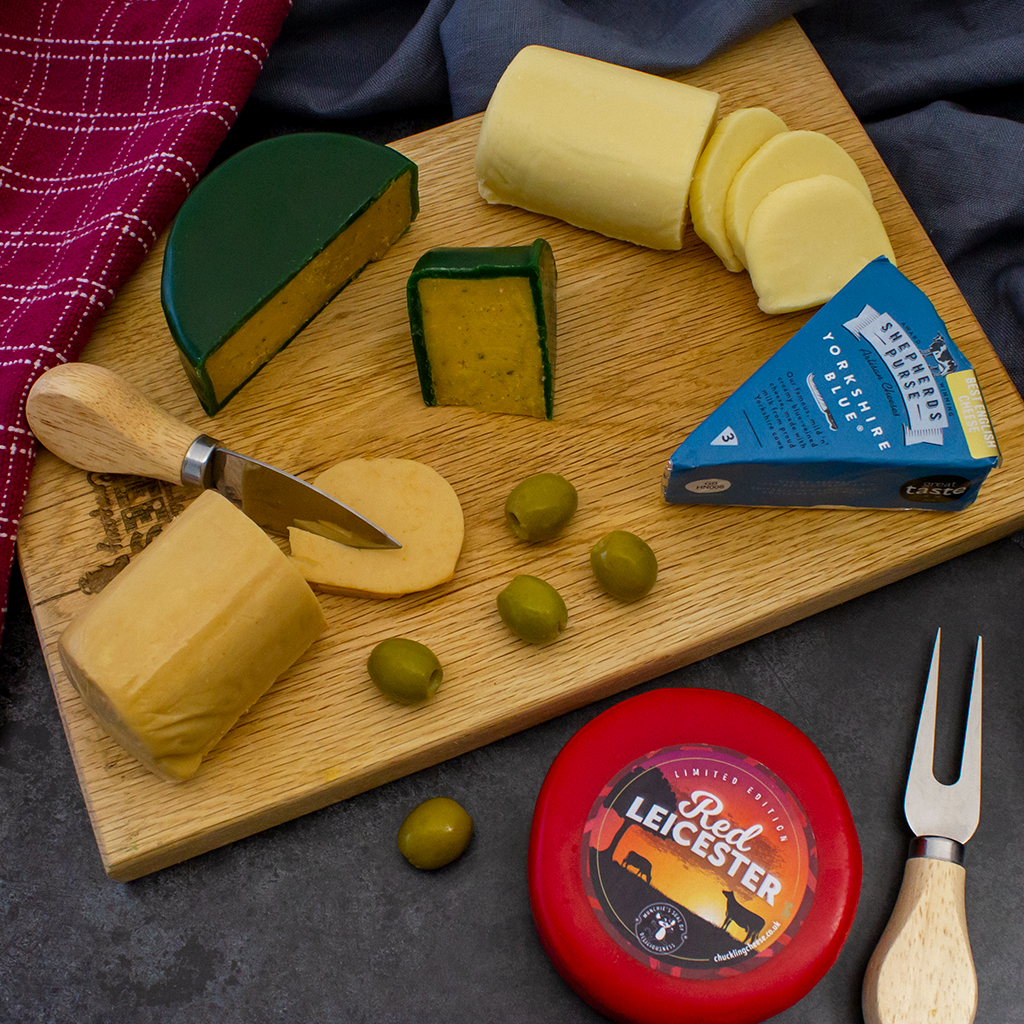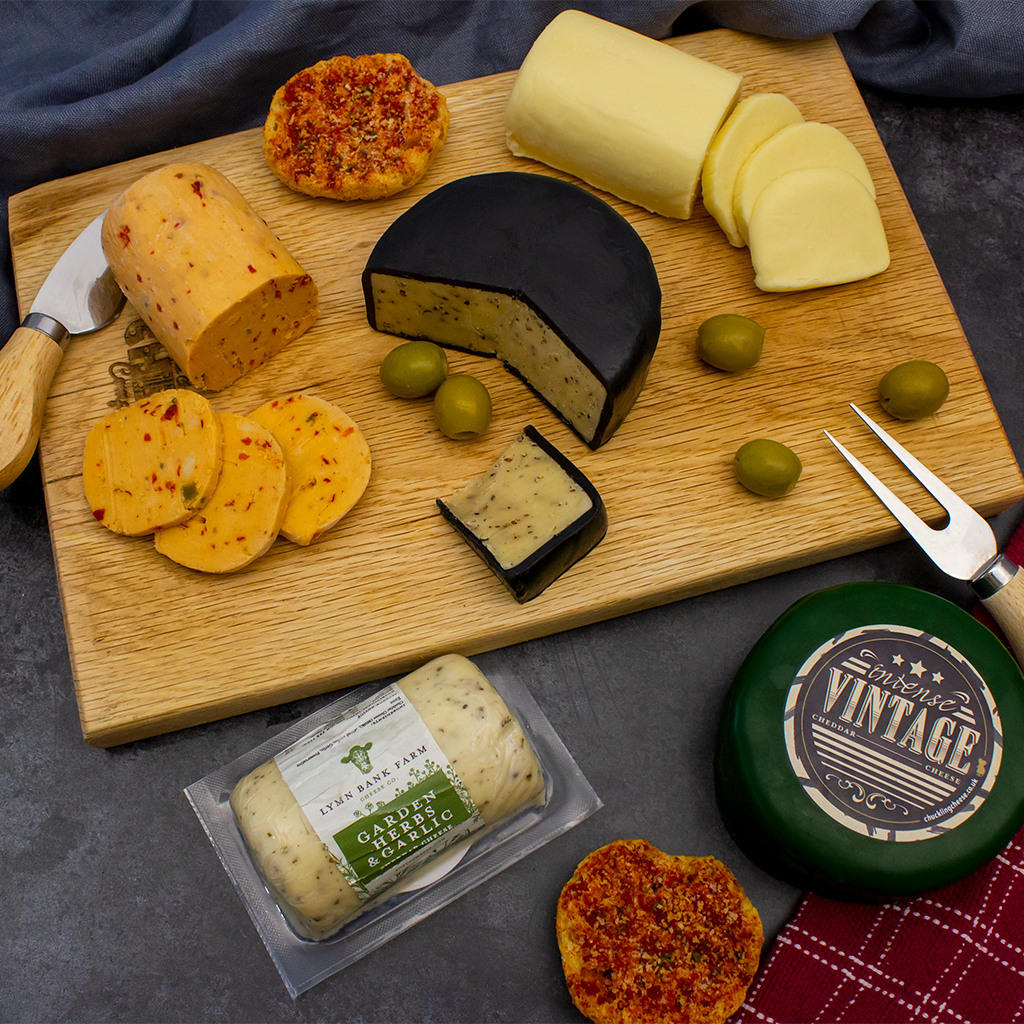Which cheese knife for which cheese?
Some of our most popular luxury cheese gifts are our cheese knives and cheese knife sets. They go down well with both cheese aficionados and those who are relatively new to the world of cheese tasting. The trouble is, the unusual array of cheese knife shapes and styles can be a little confusing to the uninitiated. Let's talk you through the main types of knives and explain when to use which cheese knife for which cheese.


Soft cheese knife
A soft cheese knife has sharp edges and holes in the blade. The holes reduce the surface area of the knife to stop the cheese from sticking, a problem that is common with soft and semi-soft cheese like Camembert. You can also use the holes to push the cheese off the knife if it does stick.
Hard cheese knife
A hard cheese knife has a sharp edge and large, solid blade. It might have a rectangular cleaver-style blade or a curved blade with a pointed tip which is useful for spearing cheese. It's designed for hard cheeses like Cheddar because it can efficiently cut cheese slices in a range of different thicknesses. Plus, it can handle the rinds of cheeses efficiently. Hard cheese knives with pointed tips can also be used to break off chunks of hard, dry cheeses such as Parmesan.
Pronged cheese knife
Pronged cheese knives have forked, speared tips on the end to allow you to spear a piece of cheese after cutting. These knives are usually fairly narrow to provide a small surface area to prevent sticking. They usually have solid blades but it's possible to find them with holes in the blade for softer cheeses. They tend to work best for semi-hard cheeses like Gouda.
Cheese slicer/plane
A cheese slice, or cheese plane as it is often known, has a broad, flat spatula-like shape with a sharp slit cut out of the middle. You run it flat against the top or side of the cheese to produce thin slices. This knife is best suited to semi-hard cheeses like Edam.
Cheese spreader
Cheese spreaders, also known as spatula knives, have rounded blades with dull edges. They're not built for cutting cheese but they spread very soft cheese across crackers or bread very efficiently. They work well for cream cheese, gorgonzola dolce and similar spreadable cheeses, but if you don't have one a butter knife can work just as well.
Which cheese knife for which cheese?
The best way to learn which cheese knife for which cheese is to get stuck in with your own cheese board. Experiment with cutting different cheeses to understand how knife shape, sharpness and style interact with different cheese textures.





